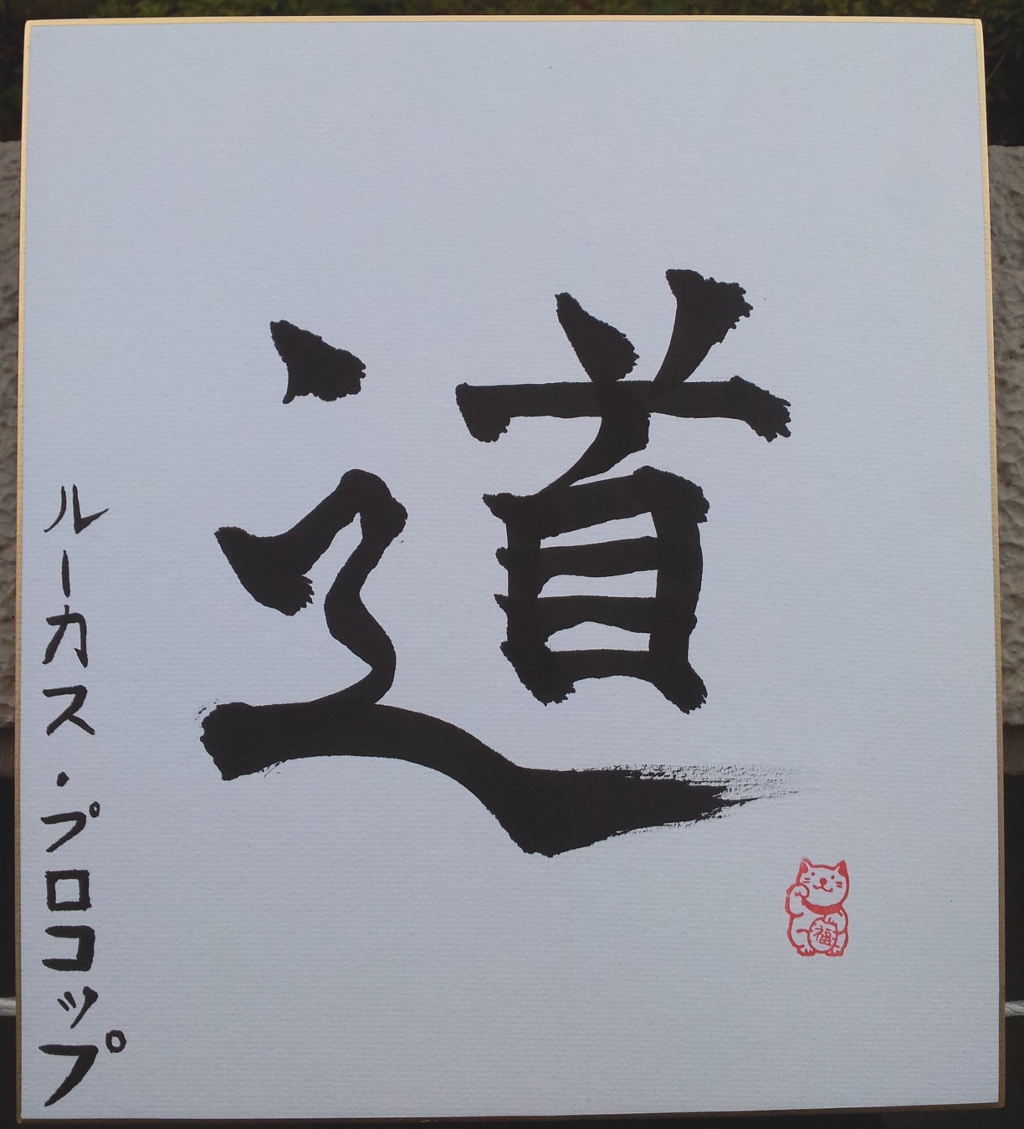Calligraphy workshop
※ This article discusses the 5th of November 2016.
KOKORO-NET is a support group engaging in introducing Japanese culture to international students. On Saturday, we had the opportunity to join a session on Japanese Calligraphy (shodō, 書道 ) at our dormitory between 14:00 and 15:40.
I watched out for the actual place of the workshop at 13:55 and our janitor
[I am not sure what to call him. You can also refer to him as dormitory manager.]
hurried us to join the workshop. It already started, I sat down and immediately got a paper. There were about 10 students and about 10 advisors. They watched us doing Calligraphy, gave us advise and helped us with the tools.
In Calligraphy, you are equipped with 4 basic tools:
A weight can help you to lock the position of the paper on the underground. Before you start, you should be aware of the following elements:
- Position
-
Sit upright, your left hand should additionally lock the paper if you are writing right-handed. Characters should be written in the middle of the paper. Save some vertical space at the left bottom for your name and stamp.
- Stroke order
-
Every individual stroke is well-defined and you can easily look up stroke orders in web application.
- Stops
-
Furthermore there are stops defined for the characters meaning that intermediate stops are taken when drawing the character rendering larger dots at this position.
- Stroke design
-
How much pressure do you apply for a specific stroke? This defines its stroke width. Ask a calligraphist for guidance.
- Balance
-
Maintain symmetry of the character and maintain the balance of stroke width.
In this session I tried some basic strokes first. Then I focused on the Kanji michi, pronounced as "dou" in "Aikidou". Though Japanese has Hiragana and Katakana as individual scripts, Kanji originating from Chinese script are more popular. Kanji literally means "Han character" where Han stands for the name of the Chinese script.
This is my result:

Thanks to Kokoro-net and the wonderful advisors. I would also love to have some theoretical And as a concluding remark: There are also Calligraphy performances.